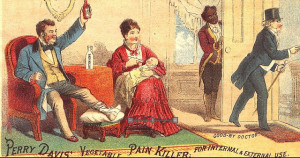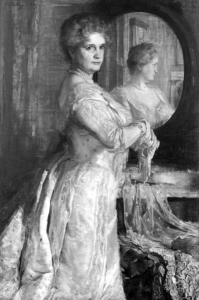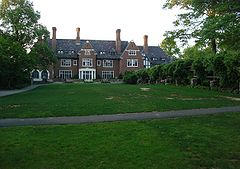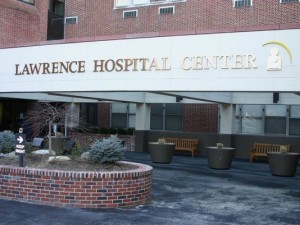William Van Duzer Lawrence (1842-1927) was my wife’s 4th cousin 4 times removed (distant, but traceable). “Removed,” by the way, means a different generation. For example, my uncle’s children are my first cousins. My great uncle’s children are my first cousins, once removed, and so on.

Van D., as we shall call him, according to Wikipedia
was a millionaire real-estate and pharmaceutical mogul who is best known for having founded Sarah Lawrence College in 1926. He played a critical role in the development of the community of Bronxville, New York, an affluent suburb of New York City defined by magnificent homes in a countrylike setting. His name can be found on the affluent Lawrence Park neighborhood, the Houlihan Lawrence Real Estate Corporation, and on Lawrence Hospital.
The pharmaceutical company was Perry Davis, later Davis & Lawrence, which published a book Nursing the Sick, which achieved mention in Culinary Landmarks: A Bibliography of Canadian cookbooks 1825-1949.
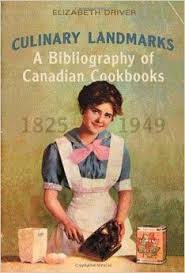
Davis and Lawrence also manufactured “Pain-Killer”
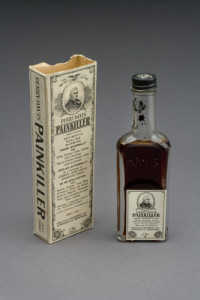
“”PAIN KILLER” was patented by Perry Davis in 1845. It is believed to be the first nationally advertised remedy specifically for pain – as distinct from a particular disorder. “Pain Killer” was distributed by Christian missionaries around the world Its ingredients, mainly opiates and ethyl alcohol, were entirely natural. No need of doctors (who had a deservedly poor reputation).
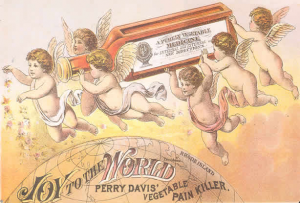
Nothing like organic opium to relieve pain. Narcotics provided a solid foundation to the Lawrence fortune; once you started taking Pain Killer, you never wanted to stop.
As a youth Mark Twain encountered it. In his Autobiography he reminisces:
It was not right to give the cat the “Pain-Killer”; I realize it now. I would not repeat it in these days. But in those “Tom Sawyer” days it was a great and sincere satisfaction to me to see Peter perform under its influence–and if actions do speak as loud as words, he took as much interest in it as I did. It was a most detestable medicine, Perry Davis Pain-Killer. Mr. Pavey’s negro man, who was a person of good judgment and considerable curiosity, wanted to sample it and I let him. It was his opinion that it was made of hell-fire.
Next Van D went into real estate. He founded Bronxville, which was designed for upper-middle class types who wanted a pristine community:
Lawrence Park proudly advertised in House and Garden in 1925: “Restrictions? Yes! Bronxville has been carefully guarded in its development…. The index of desirability has always been character, culture, and the ability to fit easily and naturally into the social scheme.”
As a Protestant minister remarked “Jesus Christ, – himself a Jew – would not be a welcome citizen of communities such as…Bronxville.
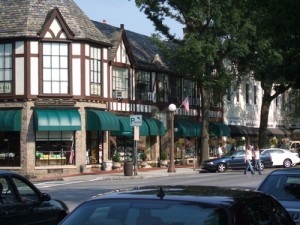
In 1958 Harry Gersh, using the name of Harry Greenberg, tried to buy a house in the Holy Square Mile, as Bronxville was known.
One real estate agent told him bluntly: “I have to tell you that you wouldn’t be comfortable here in Bronxville. There are no Jewish people in the village.” She only had his best interests at heart:
Some of my best friends are Jews,” she said. “And I wouldn’t want you to be hurt. It’s not even you and your wife so much. You’re probably used to it. But your children. You know how cruel children can be. Think of your son and daughter exposed to the cruelty of the other children.”
Van D. built the Hotel Gramatan in Bronxville
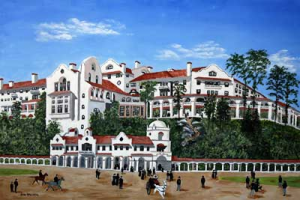
A massive fixture straddled atop Sunset Hill from 1905 until 1972, the Gramatan enjoyed its spectacular heyday in the 1920’s. Developed by real estate mogul William Van Duzer Lawrence, The hotel enjoyed an international reputation of exclusivity, attracting stars such as Greta Garbo, John and Ethel Barrymore, Gloria Swanson, Peaches and Daddy Browning and Theodore Dreiser. Society from all over the world flocked to the Gramatan to rub elbows; its balls and social events serving as mixers for the rich and famous.
Jews were allowed in the hotel.
Sarah Lawrence College was his next major work in 1926. He named it after his wife,
and built it on his estate. Westlands:
From its inception, the college was intended to provide instruction in the arts and humanities for women. Its pedagogy, modeled on the tutorial system of Oxford University, combined independent research projects, individually supervised by the teaching faculty, and seminars with low student-to-faculty ratio.
One of my nieces went there, I shall have to ask her if the tradition of all natural opium continues at the college.
Its architecture leans to Stockbroker Tudor, as we see in the Titsworth and Dudley Lawrence dorms:
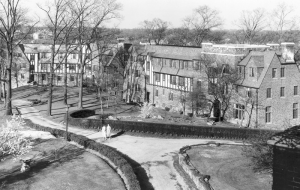
Van D. also founded Lawrence Hospital after his son nearly died when he fell sick and had to be taken to New York.
Such are the accomplishments of this Lawrence: a fortune built on opium and real estate, a college, and a hospital.
At present those who try to build fortunes on opium and its equivalents end up in jail or dead, rather than successful philanthropists.
